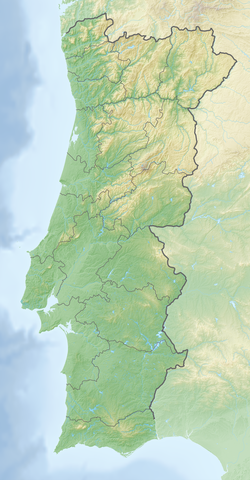This article needs additional citations for verification. (January 2018) |
You can help expand this article with text translated from the corresponding article in Portuguese. (January 2018) Click [show] for important translation instructions.
|
Historic Centre of Guimarães is an urban space of the city of Guimarães, in Portugal, tracing back to medieval age covering an area of 16 hectares and retaining many buildings from the medieval age until 19th century. Since 2001, it is declared as a World Heritage Site of UNESCO.[1]
| UNESCO World Heritage Site | |
|---|---|
 | |
| Location | Guimarães, Portugal |
| Criteria | Cultural: (ii), (iii), (iv) |
| Reference | 1031 |
| Inscription | 2001 (25th Session) |
| Area | 19.45 ha (48.1 acres) |
| Buffer zone | 99.23 ha (245.2 acres) |
| Coordinates | 41°26′37.432″N 8°17′34.091″W / 41.44373111°N 8.29280306°W |
Guimarães is closely linked to the formation of national identity and of Portuguese language in 12th century. It is the native city of Afonso Henriques, the first king of Portugal, who in 1139, declared independence of the country.
Gallery
edit-
Paços do Concelho, the old Câmara Municipal of the city
-
Medieval buildings at the Santiago Square
-
Night view of Castle of Guimarães
-
Oliveira Square and the Padrão do Salado
See also
editExternal links
editWikimedia Commons has media related to Historic Centre of Guimarães.
Wikivoyage has a travel guide for Guimarães.
References
edit- ^ Centre, UNESCO World Heritage. "Historic Centre of Guimarães". whc.unesco.org. Retrieved 2017-05-17.
